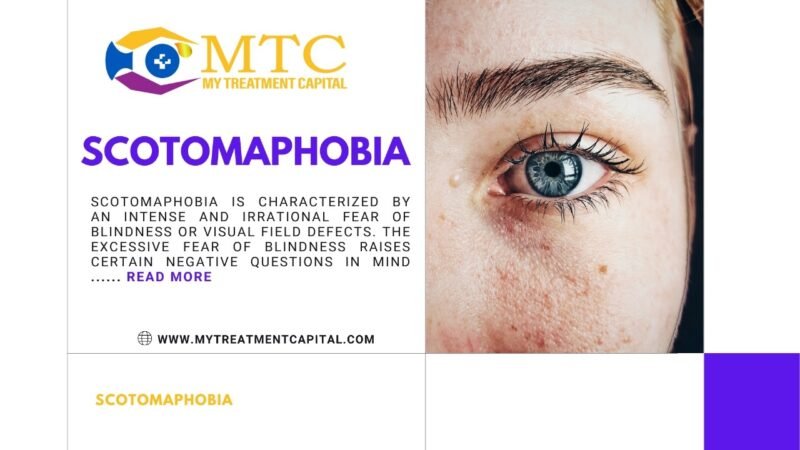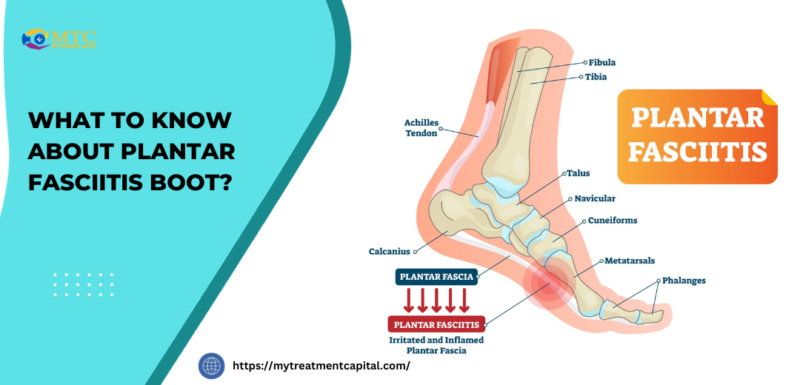Scotomaphobia is a specific phobia characterized by an intense and irrational fear of blindness or visual field defects. While many phobias are well-known, scotomaphobia is a lesser-discussed fear that can significantly impact an individual’s daily life. In this article, we will explore the nature of scotomaphobia, its possible causes, symptoms, and potential treatment options.
Symptoms of Scotomaphobia
The most prominent symptom in an individual suffering from scotomaphobia is anxiety or panic attacks. The full-blown anxiety attacks will activate the sympathetic system of the body to encounter the situation, which leads to certain changes in physiological symptoms such as;
- Increased heart rate
- Increased rate of breathing
- High Blood pressure
- Excessive Sweating
- Trembling from fear of blindness
- Disturbance in GUT motility leading to diarrhea or constipation
- Gastritis due to persistent anxiety
- Urinary incontinence (excessive urination)
Panic attacks do not occur in every individual suffering from scotomaphobia, but again it can hit anyone among the individuals suffering from it.
Some individuals may also avoid activities like medical tests that may lead to visual disturbances. This is known as avoidance behavior observed among patients with scotomaphobia.
Causes of Scotomaphobia
Traumatic experiences related to vision loss or eye disorders enhance the development of scotomaphobia as a coping mechanism.
A genetic predisposition to phobias may exist, for example; an individual belonging to a family history of anxiety or other mental disorders has more chances of developing scotomaphobia as compared to one with no family history of mental disorders.
The exact causes of scotomaphobia are unknown, although medical studies suggest that both genetics & environmental factors contribute a lot to the development of mental disorders including scotomaphobia.
Diagnosis of Scotomaphobia
Scotomaphobia is typically diagnosed through a thorough assessment conducted by a qualified mental health professional. The diagnostic process involves the following key elements:
Clinical assessment in interview
Psychologists or psychiatrists, conduct a comprehensive clinical interview. During this session, they inquire about the individual’s symptoms, personal and family medical history, and any traumatic experiences or triggers related to scotomaphobia.
Diagnostic Criteria
The mental health professional references the diagnostic criteria outlined in the Diagnostic and Statistical Manual of Mental Disorders (DSM-5). Scotomaphobia must meet specific criteria, including the presence of excessive and irrational fear related to blind spots or visual field defects, leading to avoidance behaviors and significant distress.
Observation and Self-Report
The individual’s self-report of symptoms, experiences, and the impact of scotomaphobia on daily life is crucial. Observations of avoidance behaviors and physiological responses to feared stimuli help the mental health professional gain a comprehensive understanding of the phobia’s severity.
Impact on Daily Life
Scotomaphobia can significantly impact an individual’s daily life, affecting personal relationships, professional opportunities, and overall well-being. Avoidance behaviors may limit participation in various activities, leading to social isolation and a diminished quality of life.
Management of Scotomaphobia
As discussed earlier there are no specific causes of scotomaphobia, similarly, there are no specific treatment protocols to manage it properly. However, a range of effective treatments exists for scotomaphobia, offering hope and relief for affected individuals
Cognitive-behavioral therapy (CBT)
It is the most common form of therapy in aiding patients to come out of all the negative thought processes that have embedded them in fear of anything. This therapeutic approach aids individuals in identifying and altering negative thought patterns and behaviors linked to their phobia, fostering healthier coping mechanisms. This kind of therapy is helpful in conditions like obsessive-compulsive disorders and generalized anxiety attacks as well as in any kind of phobia like scotomaphobia. The main objective of this therapy is to help individuals limit or block the fearful/unnecessary thoughts of any situation.
Desensitization technique for scotomaphobia
Desensitization is a technique to decrease or normalize the body’s response to a particular sensation or stimulus. During this process, your brain learns gradually that something is not dangerous. A gradual, guided exposure to feared stimuli helps desensitize individuals to their fears, building resilience and reducing anxiety over time. But keep in mind, at the initial stages of exposure therapy, the excessive stimulus is more harmful than gaining help. So a therapist must be sensible enough to assess & decide the level of exposure for a patient. Let’s discuss one example of exposure therapy, Height phobia (fear of heights) is also common, gradual exposure to heights will teach the brain that heights are not as dangerous as he once thought. Similarly, in scotomaphobia, therapists gradually expose the fear of blindness until the brain learns that it is just a sense of fear and not actually dangerous.
Restricted consumption of caffeine
Caffeine consumption must be reduced in individuals with scotomaphobia because caffeine stimulates certain receptors of the heart which enhances the heart rate. A fast heart rate pushes the body into a “fight and flight” condition in which other symptoms such as an increase in blood pressure, sweating, and tremors appear. All these factors mimic the physiological symptoms of scotomaphobia. So, it is better to avoid any stimulant (including caffeine) that activates the sympathetic system (fight and flight) of the body.
Soda, Chocolates, Coffee, energy drinks & green tea are often high in caffeine. One should avoid consumption of these products to reduce symptoms of scotomaphobia.
Medical treatment of scotomaphobia
Anxiolytics such as diazepam (Valium), and clonazepam (rivotril), are helpful in severe panic attacks to alleviate symptoms and support individuals.
Antidepressants such as fluoxetine (Prozac), Escitalopram (Lexapro), and Paroxetine (Paxil) are helpful in reducing some of the symptoms of scotomaphobia.
However, medication should always be taken after consultation with a doctor. Regular follow-ups with your Doctor are necessary to discuss any change/dose adjustment of medication already prescribed.
Conclusion
Scotomaphobia, though not as widely recognized as some other phobias, can have a significant impact on those who experience it. Understanding the causes, symptoms, and available treatments is crucial in providing support and helping individuals overcome their fears. As with any phobia, seeking professional help is essential for effective management and improvement of overall well-being.
Frequently Asked Questions (FAQs)
How is scotomaphobia different from other phobias?
Scotomaphobia is unique in that it centers around the fear of visual impairments and blind spots. While many phobias have more widely recognized triggers, scotomaphobia’s focus is on the potential development of visual field defects.
Is scotomaphobia treatable?
Yes, scotomaphobia is treatable. Treatment options include cognitive-behavioral therapy (CBT), exposure therapy, and, in some cases, medication. Seeking professional help is essential for effective management.
Can medication help with scotomaphobia?
In some cases, anti-anxiety medications may be prescribed to alleviate symptoms and support individuals in overcoming scotomaphobia. Medication is typically considered in conjunction with other therapeutic approaches.
What role does professional help play in managing scotomaphobia?
Seeking professional help, such as from mental health professionals, is crucial for effective management of scotomaphobia.



